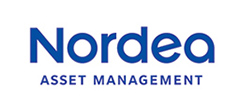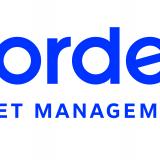Claus Vorm, Portfolio Manager of Nordea’s Stable Equity Strategies, talks about how his team is taking on the 2023 market with confidence
The primary challenge facing investors today is historically high inflationary pressures, which are forcing many central banks to aggressively hike interest rates. Despite the challenge this presents, if we look at markets through a fundamental lens, equities remain the asset class most likely to deliver a robust return able to offset inflation. Portfolio manager Claus Vorm believes the most successful companies in 2023 will be those with steady earnings and robust balance sheets, which can be stabilising forces against economic weakness and rising rates.
With Nordea’s Global Stable Equity Strategy, you select stocks on a quantitative basis. What factors play a role in the selection of stocks?
First of all, we try to identify the risk-return ratio of individual stocks and look at different key figures: the price, earnings, dividends, EBITDA and cash flow of a company. Stability is what we are looking for. While models like the Capital Asset Pricing Model assume that high risk stocks also generate higher returns, we try to identify market anomalies. We are looking for high returns with low risk.* Take the example of growth stocks. On average, expectations for growth stocks are higher than the actual return. We therefore avoid growth stocks and focus on low absolute risk stocks with a better risk-return ratio. Through this initial selection, we then get 350 stocks that are defensive, have established names and sufficient earnings transparency. Instead of simply buying these stocks into the strategy, we put a valuation overlay on top of them in order to be able to exclude negative surprises as far as possible. Only then do we start constructing the portfolio. The result is a diversified portfolio of about 100 stocks.
Will we see a rotation towards more growth stocks in 2023?
Growth stocks have performed poorly over the past year for good reasons. Some of the stocks were overpriced and are now at more reasonable valuations due to the correction. When there are growth stocks with attractive valuations again, there will be opportunities to buy in this segment. I don't see this happening on a broad scale yet. On the one hand, there are more and more attractive growth stocks, but on the other hand, many of the companies are still too expensive and the risk-return ratio too poor. But that does not mean that we blindly bet on value stocks. We look at quality and stability. In this way, we avoid focusing too much on value stocks.
What is the composition of the sector allocation?
We find the healthcare sector attractive at the moment because there are well-diversified companies here whose dependence on individual products is low. In addition, many pharmaceutical companies have great pricing power. In principle, however, we do not want any one sector to account for more than 25% of the portfolio.
What happens when a sector reaches over 25%?
That is not a hard limit. We try to identify the companies that are favourably valued on a weekly basis. As long as companies have solid data, they are also eligible for the portfolio. We also try to take special care that the companies are not too similar or operate in exactly the same area. Sometimes we also make the necessary corrections. When the performance in a sector is good for a longer period of time, smaller corrections are quite normal. Some of our healthcare stocks have been revalued. We then dumped the candidates with weaker numbers and picked up more attractive companies.
* There can be no warranty that an investment objective, targeted returns and results of an investment structure is achieved. The value of your investment can go up and down, and you could lose some or all of your invested money.
About Nordea Asset Management
Nordea Asset Management (NAM, AuM 239bn EUR*), is part of the Nordea Group, the largest financial services group in the Nordic region (AuM 359bn EUR*). NAM offers European and global investors exposure to a broad set of investment funds. We serve a wide range of clients and distributors which include banks, asset managers, independent financial advisors and insurance companies.
Nordea Asset Management has a presence in Bonn, Brussels, Copenhagen, Frankfurt, Helsinki, Lisbon, London, Luxembourg, Madrid, Milan, New York, Oslo, Paris, Santiago de Chile, Singapore, Stockholm, Vienna and Zurich. Nordea's local presence goes hand in hand with the objective of being accessible and offering the best service to clients.
Nordea’s success is based on a sustainable and unique multi-boutique approach that combines the expertise of specialised internal boutiques with exclusive external competences allowing us to deliver alpha in a stable way for the benefit of our clients. NAM solutions cover all asset classes from fixed income and equity to multi asset solutions, and manage local and European as well as US, global and emerging market products.
*Source: Nordea Investment Funds S.A., 31.12.2022
Nordea Asset Management is the functional name of the asset management business conducted by the legal entities Nordea Investment Funds S.A. and Nordea Investment Management AB (“the Legal Entities”) and their branches and subsidiaries. This document is advertising material and is intended to provide the reader with information on Nordea’s specific capabilities. This document (or any views or opinions expressed in this document) does not amount to an investment advice nor does it constitute a recommendation to invest in any financial product, investment structure or instrument, to enter into or unwind any transaction or to participate in any particular trading strategy. This document is not an offer to buy or sell, or a solicitation of an offer to buy or sell any security or instruments or to participate to any such trading strategy. Any such offering may be made only by an Offering Memorandum, or any similar contractual arrangement. Consequently, the information contained herein will be superseded in its entirety by such Offering Memorandum or contractual arrangement in its final form. Any investment decision should therefore only be based on the final legal documentation, without limitation and if applicable, Offering Memorandum, contractual arrangement, any relevant prospectus and the latest Key Information Document (KID) or the Key Investor Information Document (KIID) for UK investors where applicable, relating to the investment. The appropriateness of an investment or strategy will depend on an investor’s full circumstances and objectives. Nordea Investment Management AB recommends that investors independently evaluate particular investments and strategies as well as encourages investors to seek the advice of independent financial advisors when deemed relevant by the investor. Any products, securities, instruments or strategies discussed in this document may not be suitable for all investors. This document contains information which has been taken from a number of sources. While the information herein is considered to be correct, no representation or warranty can be given on the ultimate accuracy or completeness of such information and investors may use further sources to form a well-informed investment decision. Prospective investors or counterparties should discuss with their professional tax, legal, accounting and other adviser(s) with regards to the potential effect of any investment that they may enter into, including the possible risks and benefits of such investment. Prospective investors or counterparties should also fully understand the potential investment and ascertain that they have made an independent assessment of the appropriateness of such potential investment, based solely on their own intentions and ambitions. Investments in derivative and foreign exchange transactions may be subject to significant fluctuations which may affect the value of an investment. Investments in Emerging Markets involve a higher element of risk. The value of your investment can go up and down, and you could lose some or all of your invested money. Investments in equity and debt instruments issued by banks could bear the risk of being subject to the bail-in mechanism (meaning that equity and debt instruments could be written down in order to ensure that most unsecured creditors of an institution bear appropriate losses) as foreseen in EU Directive 2014/59/EU. Nordea Asset Management has decided to bear the cost for research, i.e. such cost is covered by existing fee arrangements (Management-/Administration-Fee). Published and created by the Legal Entities adherent to Nordea Asset Management. The Legal Entities are licensed and supervised by the Financial Supervisory Authority in Sweden and Luxembourg respectively. A summary of investor rights is available in English through the following link: https://www.nordea.lu/documents/summary-of-investors-rights/SOIR_eng_INT.pdf/. The Legal Entities’ branches and subsidiaries are licensed as well as regulated by their local financial supervisory authority in their respective country of domiciliation. Source (unless otherwise stated): Nordea Investment Funds S.A. Unless otherwise stated, all views expressed are those of the Legal Entities adherent to Nordea Asset Management and any of the Legal Entities’ branches and subsidiaries. This document may not be reproduced or circulated without prior permission. Reference to companies or other investments mentioned within this document should not be construed as a recommendation to the investor to buy or sell the same but is included for the purpose of illustration. The level of tax benefits and liabilities will depend on individual circumstances and may be subject to change in the future. © The Legal Entities adherent to Nordea Asset Management and any of the Legal Entities’ branches and/or subsidiaries.



